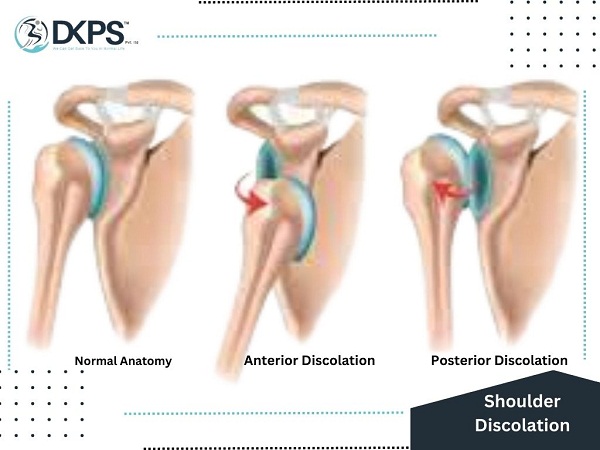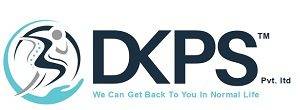- Home
- About Us
- DKPS Dealing
- BLOG
- Delhi NCR
- Delhi
- Physiotherapy at Home Near Me | Physiotherapist in South Delhi
- Best Chiropractor in Delhi
- Physiotherapist in Delhi
- Cupping Therapy in Delhi
- Home Nursing Services in Delhi
- Needle Therapy for Back Pain
- Sports Injury Physiotherapy
- Best Physiotherapist Visit at Home in Rohini Sector 24
- Physiotherapy at Home In Rohini Sector 9 |
- Physiotherapist in Pitampura | Physiotherapy at Home in Pitampura
- Physiotherapy at home in Rohini sector 29
- Physiotherapist in Paschim Vihar
- Physio home visit | Home Visit Physiotherapy |
- Physiotherapist in Saket | Best Physiotherapist in Saket |
- Physiotherapist In Janakpuri | Best Physiotherapist in Janakpuri |
- Best Physiotherapist in Punjabi Bagh | Punjabi Bagh Physiotherapist |
- Best Physiotherapist Service at Home in Dwarka, Delhi
- Best Physiotherapist in Chandigarh at Home Visit
- Faridabad
- Gurugram
- Noida
- Best Physiotherapy Gorakhpur
- Best Physiotherapist in Lucknow | Physiotherapist in Lucknow near me |
- Delhi
- Mumbai
- Delhi NCR
- Department
- Doctors
- Gallery
- Packages
- Contact Us
- Home
- About Us
- DKPS Dealing
- BLOG
- Delhi NCR
- Delhi
- Physiotherapy at Home Near Me | Physiotherapist in South Delhi
- Best Chiropractor in Delhi
- Physiotherapist in Delhi
- Cupping Therapy in Delhi
- Home Nursing Services in Delhi
- Needle Therapy for Back Pain
- Sports Injury Physiotherapy
- Best Physiotherapist Visit at Home in Rohini Sector 24
- Physiotherapy at Home In Rohini Sector 9 |
- Physiotherapist in Pitampura | Physiotherapy at Home in Pitampura
- Physiotherapy at home in Rohini sector 29
- Physiotherapist in Paschim Vihar
- Physio home visit | Home Visit Physiotherapy |
- Physiotherapist in Saket | Best Physiotherapist in Saket |
- Physiotherapist In Janakpuri | Best Physiotherapist in Janakpuri |
- Best Physiotherapist in Punjabi Bagh | Punjabi Bagh Physiotherapist |
- Best Physiotherapist Service at Home in Dwarka, Delhi
- Best Physiotherapist in Chandigarh at Home Visit
- Faridabad
- Gurugram
- Noida
- Best Physiotherapy Gorakhpur
- Best Physiotherapist in Lucknow | Physiotherapist in Lucknow near me |
- Delhi
- Mumbai
- Delhi NCR
- Department
- Doctors
- Gallery
- Packages
- Contact Us
Shoulder Dislocation
- Home
- Shoulder Dislocation

Shoulder Dislocation-
Introduction:-
Shoulder dislocation is a common injury that occurs when the upper arm bone, called the humerus, pops out of the shoulder socket. It can be a painful and debilitating condition, often requiring medical attention and rehabilitation. In this comprehensive article, we will explore the causes, symptoms, diagnosis, treatment options, and prevention strategies for shoulder dislocation.
Understanding the Shoulder Joint-
The shoulder joint is a complex structure that allows for a wide range of motion. It consists of the humerus, the scapula (shoulder blade), and the clavicle (collarbone). The head of the humerus fits into a shallow socket in the scapula called the glenoid. Ligaments, tendons, and muscles surround the joint, providing stability and facilitating movement.
Causes of Shoulder Dislocation-
Shoulder dislocations are often the result of traumatic events or accidents. They can occur during sports activities, falls, or have direct impacts on the shoulder. Some common causes include:
Sports injuries:
Contact sports like football, rugby, and wrestling can put the shoulder at risk of dislocation due to high-impact collisions or awkward movements.
Falls:
Landing on an outstretched arm or directly on the shoulder can cause the humerus to dislocate from the glenoid.
Overextension:
Forcefully extending the arm beyond its normal range of motion can lead to a dislocation.
Genetic factors:
Certain individuals may have naturally looser ligaments, making them more prone to dislocations.
Symptoms of Shoulder Dislocation-
When a shoulder dislocation occurs, it is usually evident through various symptoms, including:
Intense pain:
Dislocating the shoulder can cause severe pain, often described as a sharp or burning sensation.
Swelling and bruising:
The shoulder may swell and develop bruising due to the trauma.
Visible deformity:
In some cases, the dislocated shoulder may appear visibly out of place or disfigured.
Limited range of motion:
The affected arm may have reduced mobility, making it difficult to perform everyday tasks.
Numbness or tingling:
Nerves around the shoulder can get compressed during a dislocation, leading to sensations of numbness or tingling down the arm.
Diagnosis and Treatment Options-
If you suspect a shoulder dislocation, it is crucial to seek medical attention promptly. A healthcare professional will conduct a thorough examination and may order imaging tests such as X-rays or magnetic resonance imaging (MRI) to confirm the diagnosis.
The treatment approach for shoulder dislocation depends on several factors, including the severity of the injury, the patient’s age and overall health, and the likelihood of future dislocations. Treatment options may include:
Closed Reduction
In most cases, shoulder dislocations can be managed through a technique called closed reduction. This procedure involves gently maneuvering the humerus back into its proper position within the shoulder joint. It is typically performed under anesthesia to minimize pain and discomfort.
Immobilization
After a closed reduction, the shoulder may need to be immobilized to allow the injured tissues to heal. This may involve wearing a sling or a shoulder immobilizer for a period of time specified by the healthcare provider.
Rehabilitation and Physical Therapy-
Following the initial immobilization period, rehabilitation and physical therapy are essential to restore strength, stability, and range of motion in the shoulder. These programs typically involve targeted exercises and stretches guided by a trained professional.
-
Surgical Intervention
In some cases, particularly for recurrent or complex dislocations, surgical intervention may be necessary. Surgery aims to repair damaged ligaments, tendons, or other structures within the shoulder joint to improve stability and reduce the risk of future dislocations.
Prevention Strategies-
While shoulder dislocations cannot always be prevented, certain measures can help minimize the risk:
- Strengthening exercises: Engaging in regular shoulder-strengthening exercises can improve the stability of the joint and reduce the chances of dislocation.
- Proper technique: When participating in sports or physical activities, using proper technique and form can help avoid excessive stress on the shoulder.
- Protective gear: Wearing appropriate protective gear, such as shoulder pads or braces, can provide added support and reduce the risk of injury.
- Warm-up and cool-down: Prior to engaging in physical activities, it is crucial to warm up the muscles and joints and cool down afterward to prevent strains and sprains.
- Conclusion
Shoulder dislocations can be painful and disruptive, but with timely medical intervention and appropriate treatment, most individuals can recover fully. By understanding the causes, symptoms, diagnosis, treatment options, and prevention strategies associated with shoulder dislocations, you can make informed decisions about your health and well-being.
Remember, if you experience a shoulder dislocation or suspect one, it is important to consult a healthcare professional for an accurate diagnosis and tailored treatment plan. Take care of your shoulders, stay active, and prioritize your overall musculoskeletal health.
Physiotherapy and its Role in Shoulder Dislocation:-
Shoulder dislocation is a condition where the upper arm bone comes out of its socket in the shoulder joint. It is a painful and debilitating injury that often requires medical intervention and rehabilitation. Physiotherapy plays a crucial role in the recovery process by aiding in pain relief, restoring range of motion, and strengthening the shoulder muscles. In this section, we will explore how physiotherapy can help in the treatment of shoulder dislocation.
-
1. Pain Management
After a shoulder dislocation, individuals often experience significant pain and discomfort. Drsinghphysiocare Physiotherapists employ various techniques to manage pain effectively. These may include the application of heat or cold packs, transcutaneous electrical nerve stimulation (TENS), or ultrasound therapy. Additionally, manual therapy techniques such as soft tissue mobilization and joint mobilization can help alleviate pain and reduce muscle tension.
-
2. Range of Motion Exercises
Restoring the range of motion in the shoulder joint is a primary goal of physiotherapy following a dislocation. Physiotherapists prescribe specific exercises tailored to the individual’s condition and stage of recovery. These exercises focus on gradually increasing the range of motion while ensuring proper alignment and stability of the shoulder joint. Range of motion exercises may include pendulum swings, passive and active-assisted range of motion exercises, and stretching exercises.
-
3. Strengthening Exercises
Once the range of motion has improved, the focus shifts towards strengthening the muscles around the shoulder joint. Physiotherapists design exercises targeting the rotator cuff muscles, deltoids, and other shoulder stabilizers. Strengthening exercises may involve resistance bands, dumbbells, or bodyweight exercises. The progressive strengthening program helps enhance shoulder stability, support the joint, and prevent future dislocations.
-
4. Proprioception and Balance Training
Proprioception refers to the body’s ability to perceive its position in space. After a shoulder dislocation, the proprioceptive sense may be compromised, leading to instability and an increased risk of re-injury. Physiotherapists utilize proprioception and balance training exercises to improve joint awareness, coordination, and stability. These exercises may involve using unstable surfaces, such as wobble boards or balance discs, to challenge and enhance the proprioceptive feedback of the shoulder joint.
-
5. Functional Rehabilitation
In addition to a range of motion, strength, and proprioception training, physiotherapy also focuses on functional rehabilitation. This involves simulating and practicing daily activities or sports-specific movements to restore full functionality of the shoulder. Functional exercises are tailored to the individual’s specific needs and goals, ensuring a safe and successful return to their desired activities.
-
6. Education and Injury Prevention
Physiotherapists play a vital role in educating individuals about shoulder dislocation, its causes, and preventive measures. They provide guidance on proper body mechanics, posture correction, and techniques to avoid excessive stress on the shoulder joint. Educating patients about the signs of instability and when to seek medical attention empowers them to take proactive steps in preventing future dislocations.
In conclusion, physiotherapy is an essential component of the multidisciplinary approach to shoulder dislocation treatment. Through pain management, range of motion and strengthening exercises, proprioception training, functional rehabilitation, and patient education, physiotherapists help individuals recover from a shoulder dislocation, regain shoulder function, and reduce the risk of re-injury. If you have experienced a shoulder dislocation, consulting with a qualified physiotherapist can greatly aid in your recovery and optimize your long-term shoulder health.
How Drsinghphysiocare Can Help You:-
Drsinghphysiocare.com has very experienced physiotherapists well-versed in modern manual techniques and rehabilitation protocols. Moving patients from one place to another is complicated and can even increase the damage. Drsinghphysiocare.com offers physiotherapists home visits to rehabilitate patients in the comfort of their homes. Regular home physiotherapy by our physiotherapist helps patients actively and vigorously return to independence.
Senior physicians select our talented and experienced Physiotherapists after they meet our strict recruitment standards. As a result of our higher standards and quality of service, many patients have recovered from the comfort of their homes and saved their valuable time and money.
Find Complete Relief from Dr. Singh Physio Care Experts-
- If you think you are looking for similar services like Physiotherapist in Delhi, or Physiotherapy at Home Near Me. Please contact Dr. Singh Physiocare, team to schedule an appointment at : 8700670059 or 9953024412
